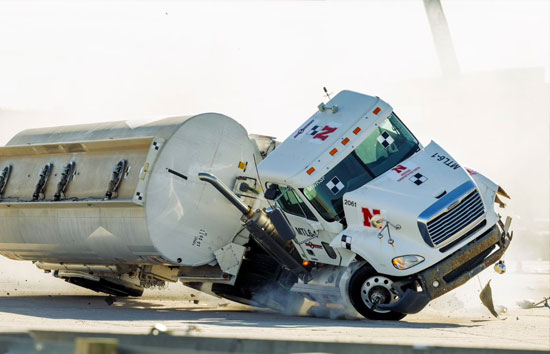Industry Communications: Winter 2021-22
By Phil Carter

Researchers from the Midwest Roadside Safety Facility (MwRSF) conducted a tractor-tanker vehicle crash on Dec. 8 to test a newly designed and significantly shorter concrete roadside barrier. The rare crash test passed with flying colors as everything predicted to happen happened, according to Cody Stolle, research assistant professor.
“The work from our students and engineers was phenomenal,” he said. “It was exactly on point.”
The 80,000-pound tractor-tanker impacted the concrete roadside barrier at 65 mph, rolled on top of the barrier briefly, and was redirected back onto the road before it eventually rolled onto its side. All of this happened within a second of real time as high-speed cameras, sensors, gauges and other technology were used to capture data and assess any damages to the tractor-tanker or barrier.
Tractor-tanker crashes often make national headlines for being catastrophic. The barrier tested by MwRSF is designed to “upright the vehicle and prevent it from other potentially dangerous outcomes such as rolling over or rupturing the tank and causing a large spill on the roadway,” Stolle said. With new regulations published by the Manual for Assessing Safety Hardware, concrete barriers of this design are required to be at least 90 inches tall to capture and contain a tractor-tanker vehicle traveling roadways at high speeds. This barrier, standing 62 inches tall, 22 inches wide at its base and 10 inches wide at its top, is also designed to keep a tractor-tanker from careening off of a bridge or impacting oncoming traffic across a highway.
Members of the media and the public were invited to attend the test, which was the first of its kind in more than 30 years, according to Stolle. The crash test, which took place at MwRSF’s Outdoor Proving Grounds on the western edge of the Lincoln Municipal Airport, could also be viewed online as the event was livestreamed.